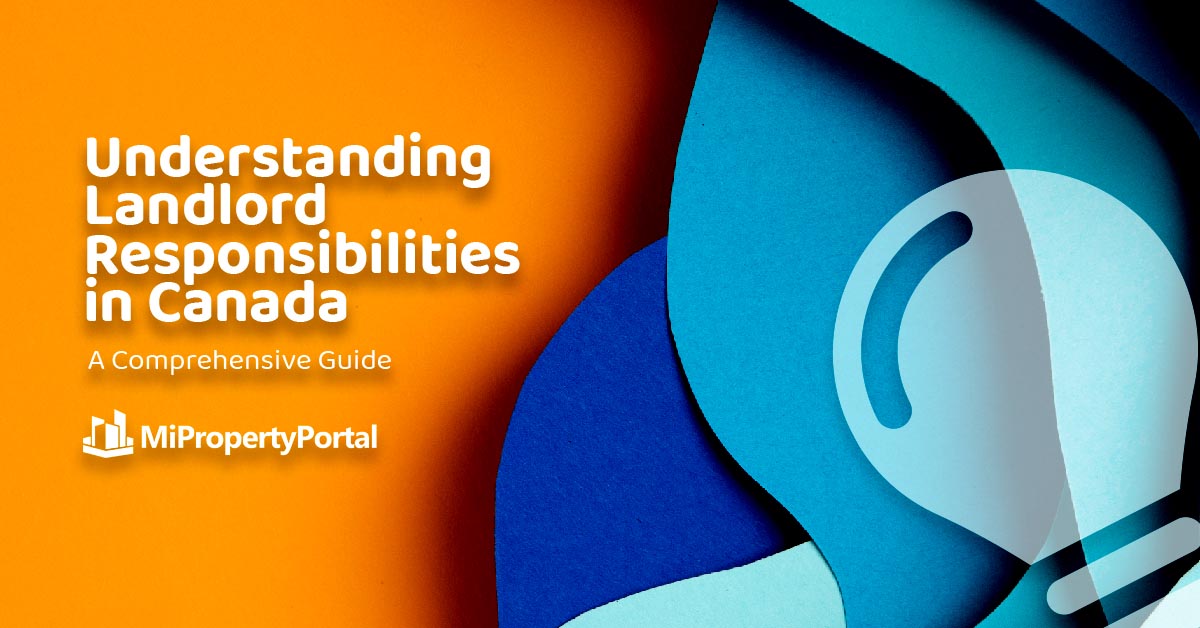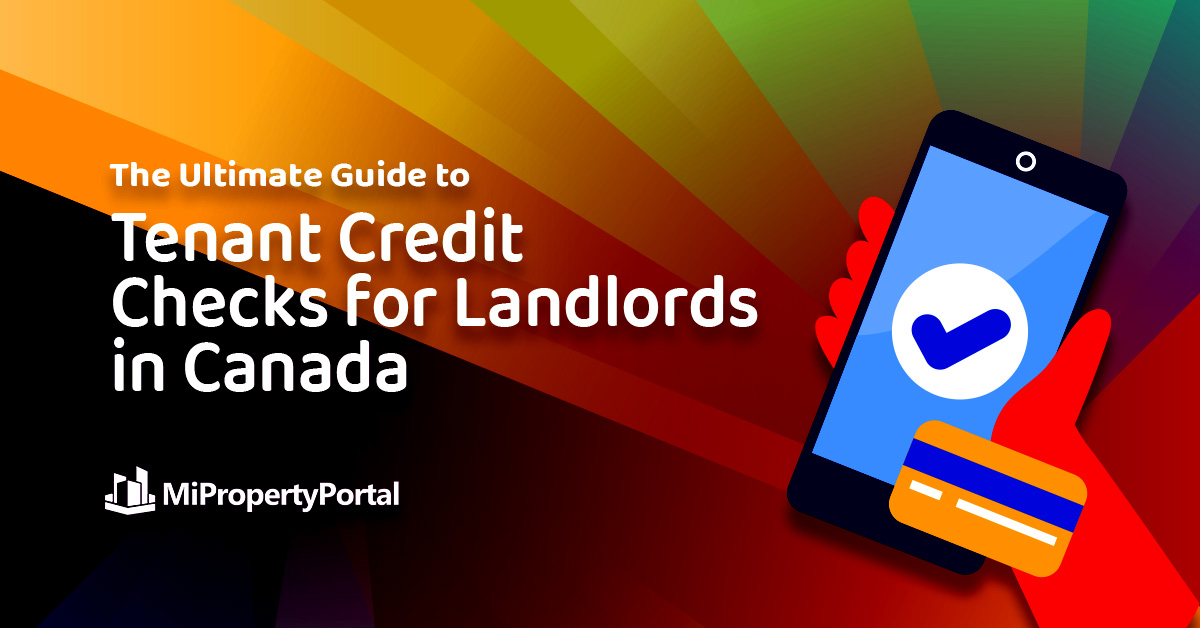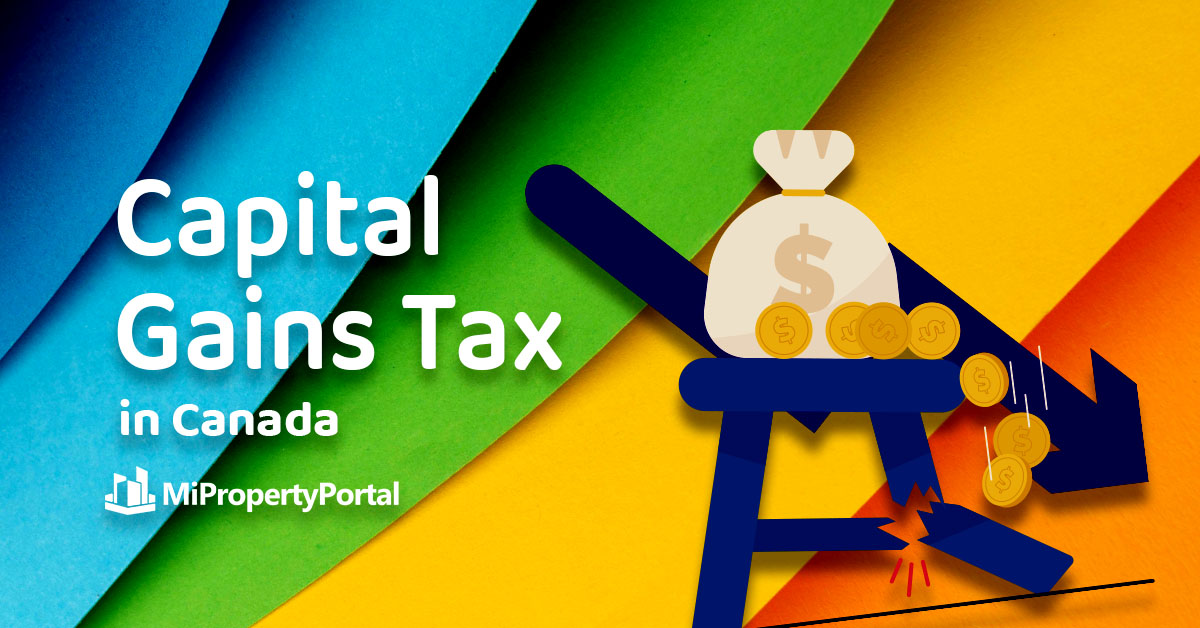In Guide
Understanding Landlord Responsibilities in Canada: A Comprehensive Guide

Mi Property Portal
October 30, 2023 - 13 min read
Understanding Landlord Responsibilities in Canada is a must for a Landlord, as being one comes with unique obligations, rules, and regulations. It is crucial to understand these responsibilities to ensure a harmonious landlord-tenant relationship and avoid potential legal pitfalls.
In this blog post, we will delve into various aspects of landlord responsibilities in Canada, including the legal framework, tenant safety and security, maintenance and repairs, and miscellaneous responsibilities. By the end of this guide, you’ll have a comprehensive understanding of what it takes to be a responsible landlord in the Great White North.
The Residential Tenancies Act (RTA)
The Residential Tenancies Act (RTA) is a legal framework for Canada’s real estate rental industry. It is a cornerstone in the landlord-tenant relationship, offering clear guidelines and regulations to maintain a harmonious living environment. Each province and territory established this legislation to protect the interests of both landlords and tenants, promoting fairness and accountability.
Understanding that the RTA applies to a specific subset of individuals living in rental housing is essential. The exclusions are:
- Emergency Shelters
- Hospitals or Nursing Homes (Long-Term Care Facilities)
- Prison
- Student Residents or Dormitories
- Temporary or Seasonal Use Units
- Units with Shared Kitchen or Bathroom
- People Not on a Lease
You can check out the Handbooks published by the government of Alberta, which explains the rights and responsibilities of all tenants, landlords, and agents involved in renting residential premises in Alberta under the Residential Tenancies Act and related regulations
The Landlord Tenant Board (LTB)
The provincial government created the Landlord Tenant Board (LTB) to address and resolve disputes between tenants and landlords. It serves as a neutral third party, ensuring that conflicts are handled impartially and by the law. Whether it’s a disagreement over rent, maintenance issues, or eviction proceedings, the LTB provides a fair and equitable resolution. Click here to learn more from the Ontario LTB’s website
What are the Landlord’s Rights and Responsibilities in Canada?
Landlords in Canada are bound by a set of legal obligations that ensure the protection and rights of both landlords and tenants. According to the Residential Tenancies Act (RTA), landlords have specific responsibilities and rights in relation to their rental properties.
Tenant Selection
Landlords are permitted to select their tenants based on criteria such as income information, credit checks, references, rental history, and similar factors.
Rent Collection
Entry to the Rental Property
Landlords may enter the rental premises following the procedures outlined in the RTA and lease terms. This entry can be for purposes such as making necessary repairs, property maintenance, showcasing the unit to prospective tenants, and in cases of emergencies.
Annual Rent Increase
Increase rent according to the provincial rent increase guideline
Tenant Eviction
When a tenant breaches the lease terms
Recovery of Expenses
Landlords have the right to apply for an order requiring the tenant to cover reasonable out-of-pocket expenses incurred by the landlord due to the tenant’s conduct or the actions of individuals visiting or residing in the rental unit. These expenses must have substantially interfered with the landlord’s reasonable enjoyment or lawful rights, privileges, or interests.
Claiming Rent Arrears
Landlords can apply to claim rent arrears or compensation up to one year after the tenant’s move-out date, provided the tenant vacated the rental unit on or after September 1, 2021. This claim includes unpaid rent or compensation, charges related to NSF cheques, unpaid utility bills (including heat, electricity, and water), costs for damages to the rental unit, and expenses incurred due to the tenant’s or others’ actions substantially interfering with the landlord’s reasonable enjoyment or lawful rights, privileges, or interests.
Landlord's Responsibilities to the Tenant in Canada
Maintenance of Tenant's Home
Landlords are required to maintain the tenant’s residence in a satisfactory state of repair and suitable for habitation. This maintenance should be undertaken at the landlord’s expense and by health, safety, housing, and maintenance standards.
Provision of Utilities
Landlords must consistently provide a reasonable supply of fuel, electricity, hot and cold water, as well as other utility services (such as cable and internet), unless an agreement with the tenant specifies otherwise, with the tenant being responsible for obtaining and paying for these services.
Respect for Tenant's Enjoyment
Landlords should not interfere with the reasonable enjoyment of the rented premises by the tenant, the tenant’s household members, or their guests. This ensures that tenants can peacefully and comfortably enjoy their living space.
Property Seizure
Landlords cannot confiscate a tenant’s property without following the legal process, even in rent arrears or other breach of the tenant’s obligations.
No Harassment or Threats
Landlords must refrain from engaging in harassment, obstruction, coercion, threats, or interference with the tenant. This fosters a respectful and safe living environment for the tenant.
Provision of Documents
Landlords should provide the tenants with necessary documents, such as Rent Receipts, Written notice of the landlord’s legal name and address, and a copy of the Lease or Tenancy Agreement without any charge.
Tenant Safety and Security Responsibilities for Landlord
Here are some key responsibilities of landlords in Canada in creating a safe and secure living environment for their tenants:
Property Maintenance
Landlords should maintain the property in a safe and habitable condition. Regular inspections and upkeep are essential to promptly identify and address potential safety hazards.
Fire Safety
Providing adequate fire safety measures is mandatory. This includes functioning smoke detectors, fire extinguishers, and marked fire exits. Landlords must ensure that these systems are regularly tested and maintained. Landlords should ensure that fire exits are unobstructed and marked and provide fire safety guidelines to tenants.
Security Measures
Landlords should take steps to enhance security on the property, such as installing deadbolt locks, outdoor lighting, and security cameras where applicable, to minimise the risks from criminal activity.
Emergency Preparedness
Landlords should provide tenants with information on emergency procedures, including evacuation plans and contact details for emergency services.
Gas Leaks and Carbon Monoxide Concerns
A landlord should install carbon monoxide detectors in properties with gas appliances. He or she should respond immediately to reports of gas leaks or carbon monoxide concerns. Also, conduct regular inspections of gas lines and appliances.
Electrical Safety
Landlords should ensure that electrical systems are up to code and address electrical issues promptly, such as faulty wiring or outlets.
Moreover, they need to educate tenants on safe electrical practices.
Ensuring Proper Air Conditioning and Heating Systems
Landlords should maintain heating and cooling systems to ensure they function safely and efficiently and provide guidelines for tenants on using them safely. Also, the landlords should respond promptly to reports of heating or cooling system malfunctions.
Landlord Maintenance and Repairs Responsibilities
A landlord’s responsibility encompasses the maintenance and repair of the leased property. This encompasses a variety of tasks, including the maintenance and repairs of electrical, heating, and plumbing systems, as well as the care of appliances, roofs, walls, windows, doors, lighting, locks, patios, pools, and various other components.
Landlords must maintain the building and the rental units in a condition that complies with all health, safety, housing, and maintenance standards. Notably, landlords are responsible for repairs, irrespective of whether tenants were aware of any issues before entering the rental agreement.
Noise Complaints
The landlord is responsible for addressing any issues that may be causing inconvenience for their tenants, including excessive noise levels, except when it is the cause of ordinary, everyday activities. It is to be noted that every municipality has their by-laws for the matter and the resolution method.
Is Snow Removal Landlord’s Responsibility?
It is the Landlord’s responsibility to clear the snow on the property. The time to have the snow cleared varies according to the region, but usually, it is within 24 hours of the snowfall. There is a fine if it is not taken care of. A separate agreement must be made if the snow removal becomes the tenant’s responsibility; otherwise, it will be like the famous case Montgomery v. Van of 2009.
A landlord can hire a third party for the snow removal. In case of a slip and fall due to snow, there will be legal consequences if there is proof of negligence.
Section 26 (Exterior common areas) of Ontario regulation 517 of the Residential Tenancies Act, 2006 states:
“Exterior common areas shall be maintained in a condition suitable for their intended use and free of hazards and, for these purposes, the following shall be removed:
- Noxious weeds as defined in the regulations to the Weed Control Act.
- Dead, decayed or damaged trees or parts of such trees that create an unsafe condition.
- Rubbish or debris, including abandoned motor vehicles.
- Structures that create an unsafe condition.
- Unsafe accumulations of ice and snow.
Section 28 (Surface of driveways etc.) also states, “Driveways, ramps, parking garages, parking areas, paths, walkways, landings, outside stairs and any similar area shall be maintained to provide a safe surface for normal use.”
You can look it up on your province’s Landlord and Tenant Board’s website if you have further confusion.
Responsibilities of the Landlord for Garbage, Pet Waste and Trash in the Rental Property
The tenant is responsible for disposing of pet waste and garbage from the property unless there is any agreement between the tenant and the landlord. The landlord has to provide trash receptacles to the tenants.

Responsibilities of the Landlord for Pest Control in Rental Properties

The landlord is responsible for paying for pest control in case of pests on the property. The landlord should have an Integrated Pest Management system for the properties and hire a licensed pest control professional in case of vermin and pest infestation.
You can download the Pest Education For Tenants Toolkit to inform you and the tenants.
Responsibilities of the Landlord for Mould Problems in Rental Properties
The landlords or the Property owners are responsible for fixing mould problems as they have to keep the property as per the Minimum Housing and Health Standards. These standards make the property safe and habitable, and not meeting them is a breach of the Residential Tenancies Act (RTA). The tenant should inform the landlord about such problems formally and quickly. You can click on this guide to learn more about mould problems.
Responsibilities of Landlord for Water Damage
The landlord is responsible for dealing with the water damage, provided that the tenant’s negligence did not cause the damage, e.g., the tenant forgot to turn the sink off, and it overflowed. The damage might be caused by other problems, such as leaking water pipes. In those cases, the insurance company will inspect and deduct to recover the cost.
For Flood Damage
Depending on the extent of damage to the unit, you may have the option to terminate your rental agreement. If the unit is so severely damaged that it cannot be inhabited or repaired, your rental agreement could be considered “frustrated,” meaning it is not feasible to continue living there.
In such cases, it is crucial to formally notify your landlord in writing that you are treating the rental agreement as frustrated. If both you and your landlord agree on the condition of the unit, you may not be required to continue paying rent, and the landlord must return your security deposit unless you have outstanding rent from before the flood. Both the tenant and landlord should be prepared to provide evidence of the condition of the unit during any legal proceedings or disputes. This evidence can include photographs, videos, and other relevant documentation.
MIPropertyPortal (MIPP) can help you save time with its Property Inspection and Maintenace Tracking. From pest infestation and clogged toilets and drains to other maintenance service requests, MIPP is here to help you maintain multiple service requests simultaneously. It offers pre-rent property inspection to avoid future hassles and complaints by the tenants. This will protect your reputation as a landlord.
Click here to learn about the features of MIPP or get a demo and experience the smoothness in property management.
Conclusion
The world of landlord responsibilities in Canada is dynamic and subject to change. To stay compliant and thrive as a landlord, it’s crucial to stay informed about updates in local legislation and best practices.
In conclusion, understanding and fulfilling your landlord responsibilities in Canada is essential for maintaining a positive landlord-tenant relationship and avoiding legal complications. By diligently following these guidelines and staying informed about local laws, you can provide your tenants a safe and pleasant rental experience.
Frequently Asked Questions (FAQs)
Regular inspections, typically every three to six months, help identify maintenance issues and ensure tenant compliance with the lease agreement.
In some provinces, rent control regulations limit the amount and frequency of rent increases. Check your local laws for specific guidelines.
Try to resolve issues through open communication. If that fails, you can seek mediation services or contact your local Landlord and Tenant Board for assistance.
. Landlords can only enter the rental premises following the procedures outlined in the Residential Tenancies Act (RTA) and lease terms. This entry can be for purposes such as making necessary repairs, property maintenance, showcasing the unit to prospective tenants, and in cases of emergencies.
Yes, the landlord is responsible for clearing snow on the property in Canada, typically within 24 hours of snowfall, if there is not any other agreement.
Landlords are responsible for paying for pest control in Canada in case of pests on the property. They should have an Integrated Pest Management system and hire a licensed pest control professional.
In a rental property, tenants are typically responsible for disposing of pet waste and garbage unless there is a specific agreement between the tenant and the landlord. Landlords must provide trash receptacles for tenants to use.
Landlords are responsible for paying for pest control in a rental property if there is a pest infestation. They should also have an Integrated Pest Management system and hire a licensed pest control professional.
If a tenant discovers a mould problem in the rental property, they should inform the landlord formally and promptly. Landlords are responsible for addressing mould issues to ensure the property complies with Minimum Housing and Health Standards, as required by the Residential Tenancies Act (RTA).
Landlords are responsible for dealing with water damage in a rental property, provided the damage is not due to the tenant's negligence.
In cases of severe flood damage that makes the rental unit uninhabitable or unrepairable, tenants may have the option to terminate their rental agreement.


